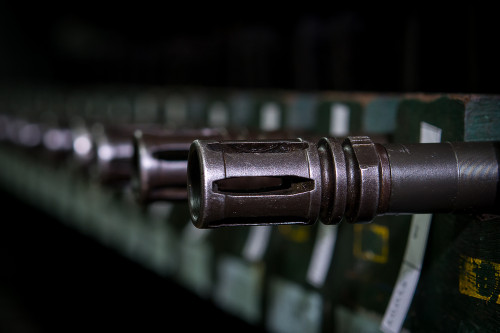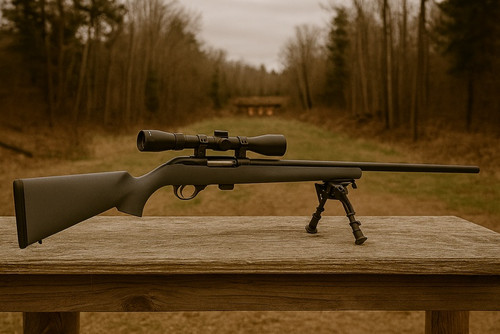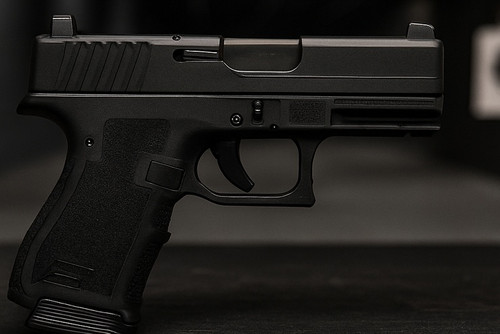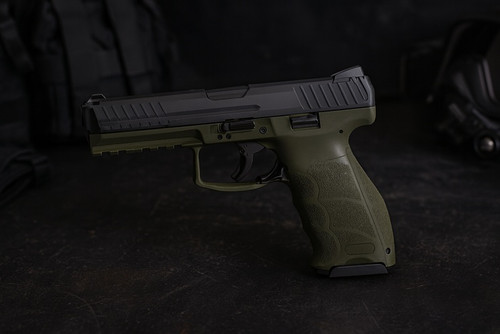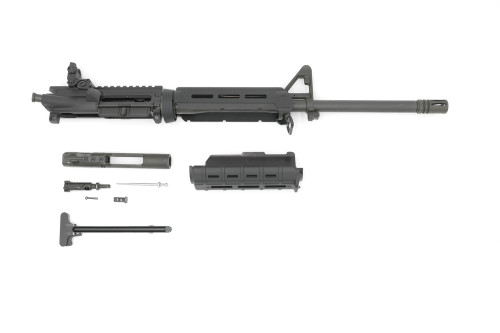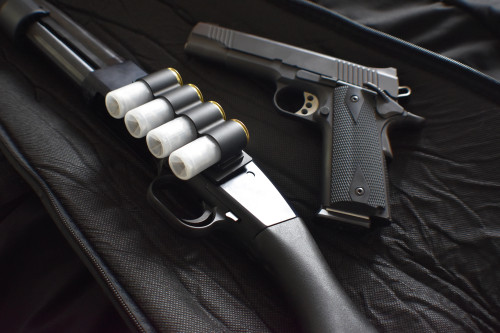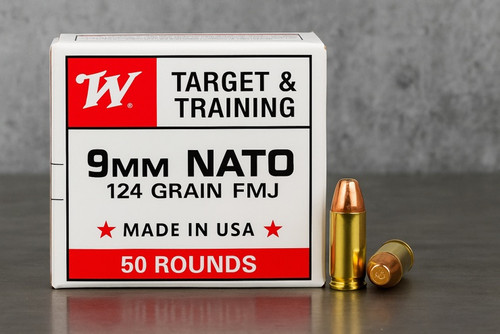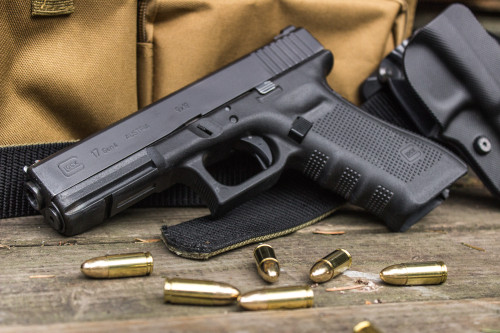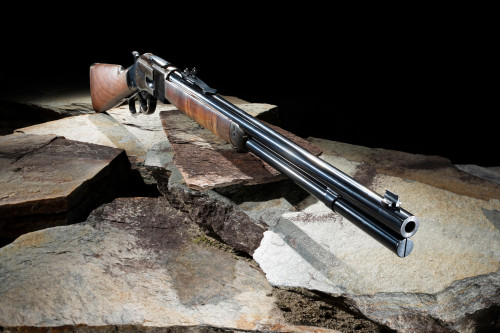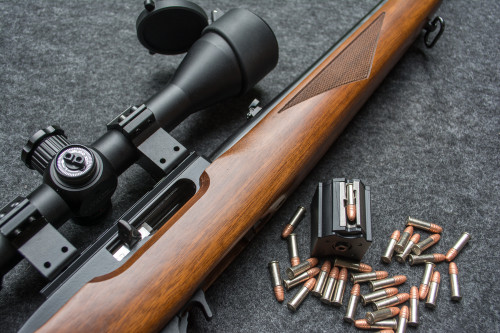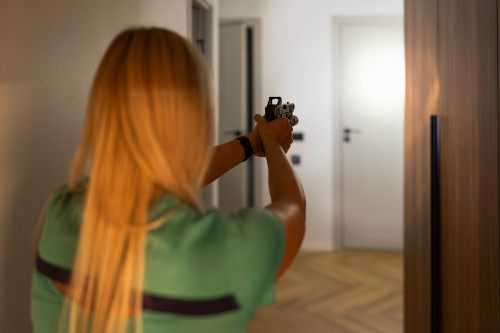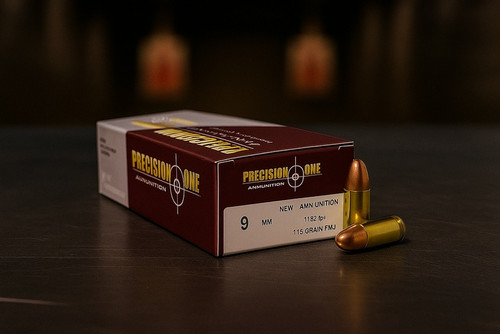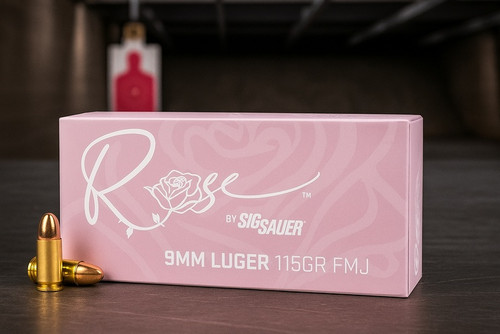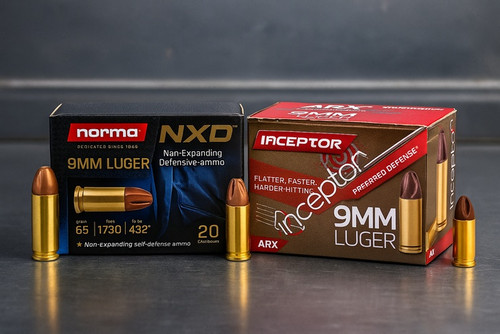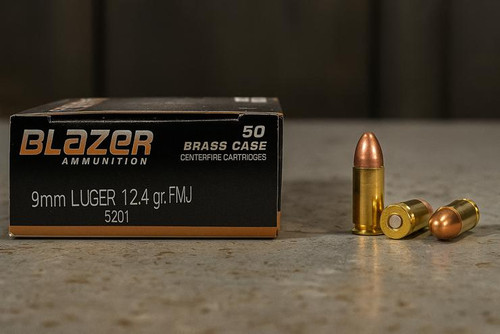Quick Answer
Start with the Carbine for all-around plinking, Target/Competition for precision matches, Takedown for backpacking, Compact for young shooters, Tactical for optics/modding, Sporter for upgraded wood/free-float feel, Charger as a compact truck/backpack option. Choose by use-case, not hype—accuracy, reliability, and huge aftermarket make any 10/22 a win.
Key Takeaways
- Match model to role: plink, hunt, compete, travel.
- Aftermarket parts transform performance affordably.
- Optics rails and triggers drive real gains.
- Takedown returns to zero when the lockup is correctly tensioned—best maintained when optics are mounted on the barrel assembly.
- Rotary mags and V-block = reliability and modularity.
How We Selected the Best Ruger 10/22 Models
Our selection process focused on matching each 10/22 variant to specific use cases. We looked at plinking fun, small-game hunting ability, and competition potential across formats like NRL22 and Rimfire Challenge.
We evaluated each model against practical criteria: how well it puts rounds where you aim, ease of mounting optics, overall ergonomics, weight for intended use, and bang for your buck.
The ProArmory team brings diverse backgrounds—military service, competition experience, and gun-shop expertise—to our analysis. This combined with deep spec research and input from reputable sources informs our recommendations.
Each recommendation comes from analyzing manufacturer documentation and cross-checking against trusted authority guidance. With over 7 million 10/22s produced since 1964, this iconic American firearm deserves careful consideration.
The Top Ruger 10/22 Picks
Note: Street prices fluctuate by region/date; check current retailer pricing.
| Model | Price (typical street; varies) | Barrel | OAL | Weight | Capacity |
|---|---|---|---|---|---|
| Ruger 10/22 Takedown | $449–$649 | 18.5" | 37" (assembled) | 4.6 lb | 10-round rotary magazine |
| Ruger 10/22 Target | $590–$800 | 16.1" (lightweight / aluminum-sleeved) | 35.25" | 5 lb | 10-round rotary magazine |
| Ruger 10/22 Charger | $360–$450 | 10" | 19.25" | 51.5 oz | 10-round rotary magazine |
| Ruger 10/22 Carbine | $300–$450 | 18.5" | 37" | 5 lb | 10-round rotary magazine |
| Ruger 10/22 Competition | $760–$1,100 | 16.1" bull, fluted | 36" | 6 lb | 10-round rotary magazine |
| Ruger 10/22 Compact | $255–$320 | 16.1" | 34" | 4.4 lb | 10-round rotary magazine |
| Ruger 10/22 Tactical | $330–$700 | 16.1" | 36.25" | 4.3 lb | 10-round rotary magazine |
| Ruger 10/22 Sporter | $300–$400 | 18.5" | 37" | 5.2 lb | 10-round rotary magazine |
Ruger 10/22 Takedown

The Takedown model takes everything great about the standard 10/22 and adds a brilliant travel feature. It breaks into two main components—barrel assembly and receiver/stock—in seconds without tools. This makes it perfect for backpacks, small storage spaces, or discreet transport.
What really sets the Takedown apart is how it maintains zero after reassembly. Many takedown firearms struggle here, but Ruger engineered a cam-lock system that returns the barrel to the same position each time. For folks who add optics, this consistency proves crucial.
The beauty of the Takedown lies in its dual nature. When assembled, it functions exactly like a standard 10/22—same controls, same shooting experience, same magazines. You get all the modularity and aftermarket support of the platform but with added portability.
For backpackers, backcountry explorers, or anyone with space constraints, the Takedown solves real problems. The standard version comes with a padded case that holds the separated rifle plus extra magazines and ammunition. Some variants include rail systems or specialty stocks for even more flexibility.
Price: $418
Specs
- Caliber: .22 LR
- Action: Semi-automatic
- Capacity: 10+1
- Barrel: 18.5"
- Overall Length (assembled): 37"
- Weight: 4.6 lb
Features
- Tool-less takedown mechanism
- Fixed front / adjustable rear sights
- Synthetic stock options
- Optics-friendly variants
Pros
- Ultra-portable; backpack-ready
- When properly tensioned and with optics on the barrel assembly, the Takedown maintains zero after reassembly.
- Ideal "go-anywhere" rimfire
Cons
- Pricier than non-takedown models
- Slim barrel heats up on long strings
Ruger 10/22 Target

The Target model aims squarely at precision rimfire shooting. Its most distinctive feature is the thumbhole laminate stock that provides a stable, ergonomic platform for deliberate shots. The palm swell and cheek weld position you naturally behind the sights or optic.
Ruger didn't stop at the stock. The Target includes an adjustable trigger that breaks cleaner and lighter than standard 10/22 triggers—typically around 2-3 pounds. This upgrade alone justifies much of the price difference from base models, as trigger quality directly impacts accuracy potential.
Despite appearances, what looks like a heavy bull barrel is actually a clever design with an aluminum sleeve over a standard-contour barrel. This gives you the stability benefits of a bull barrel but keeps weight manageable. The sleeve helps with heat dissipation during longer shooting sessions, too.
The Target comes ready for optics with a Picatinny rail. It makes scope or red dot mounting straightforward. For anyone starting in precision rimfire events or just wanting better accuracy from their plinking sessions, the Target offers a turnkey solution without diving into aftermarket upgrades right away.
Price: $596
Specs
- Caliber: .22 LR
- Action: Semi-automatic
- Capacity: 10+1
- Barrel: 16.1" tensioned/aluminum-sleeved steel liner (Target Lite configuration)
- OAL: 35.25"
- Weight: 5 lb
Features
- Picatinny rail for easy optic mounting
- Includes Ruger’s lighter BX-Trigger (~2.5–3 lb); it’s not user-adjustable but is a substantial improvement over the base trigger.
- Thumbhole laminate stock
- Lightweight barrel system
Pros
- Ergonomics tailored to precision
- Optic-ready out of the box
- Great entry to target/club matches
Cons
- Aesthetics can be polarizing
- Less "classic" look than Carbine/Sporter
Ruger 10/22 Charger
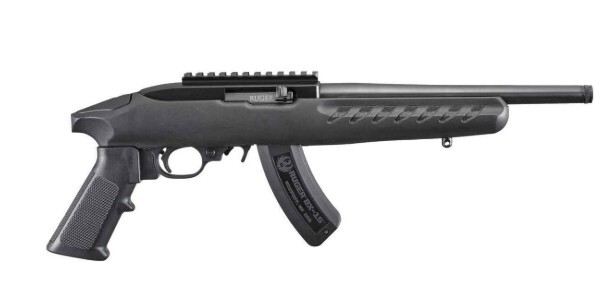
The Charger takes the 10/22 action and shrinks it into a pistol format. With its 10-inch barrel and abbreviated stock, it creates a compact package that delivers all the fun of a 10/22 in a form that fits almost anywhere. It's essentially a scaled-down 10/22 with unique applications.
Right out of the box, the Charger comes with a Picatinny rail for mounting optics—almost a necessity given the short sight radius. The threaded barrel makes it suppressor-ready, which many owners appreciate for noise-sensitive shooting locations or just boosting the fun factor.
Most Charger models feature a mounting point at the rear for attaching a pistol brace (where legally permitted). This addition dramatically improves stability and practical accuracy. When equipped with a folding brace, the Charger becomes even more compact for storage.
The Charger excels as a truck gun, a backpack option for outdoor adventures, or just a novel range toy. Many owners report it's their most-requested firearm when friends join them at the range—there's something inherently satisfying about its compact punch and minimal recoil.
Price: $299
Specs
- Caliber: .22 LR
- Action: Semi-automatic
- Capacity: 15+1 (varies by magazine)
- Barrel: 10"
- OAL: 19.25"
- Weight: 51.5 oz
Features
- Picatinny rail for optics
- Threaded muzzle
- Polymer furniture
- Rear-mount options exist, but brace legality is evolving; verify current federal/state rules before purchase/use.
Pros
- Super portable for truck/pack kits
- Tons of accessory support
- Ridiculously fun at the range
Cons
- Less inherent stability than a rifle
- Short sight radius without optics
Ruger 10/22 Carbine

The Carbine is the classic 10/22—the one that started it and still sets the mark for rimfire semi-autos. Clean lines and a simple layout define it. When most people hear “10/22,” this is the picture that pops up. It makes an ideal place to start for most new owners.
This model typically features an 18.5-inch barrel. It offers good velocity for .22 LR ammunition and enough sight radius for practical accuracy. Stock options include synthetic or hardwood (species varies by production).
What makes the Carbine stand out is the mix of price and performance. It costs less than many niche versions yet keeps the same core range feel. The standard sights—gold bead front and adjustable rear—work well for plinking and small game out to about 50 yards.
New owners get a soft first step into rimfire with light recoil and modest noise. Experienced hands get a solid base that takes upgrades with ease. You can swap nearly every part, so the rifle grows with your skills and projects.
Price: $199
Specs
- Caliber: .22 LR
- Action: Semi-automatic
- Capacity: 10+1
- Barrel: 18.5"
- OAL: 37"
- Weight: 5 lb
Features
- Fixed front / adjustable rear sights
- Hardwood or synthetic stock options
- Huge aftermarket compatibility
- Proven rotary magazine
Pros
- Affordable entry point
- Perfect platform for first upgrades
- Widest parts ecosystem
Cons
- Basic sights/trigger out of the box
- Heavier/longer than compact variants
Ruger 10/22 Competition

The Competition model marks the high point of factory 10/22 setups. It was built for fast rimfire matches like Steel Challenge and NRL22. Many touches come from custom builds. Each detail aims at match-grade accuracy and fast handling.
At the heart of the Competition sits a CNC-machined, heat-treated receiver that's been stress-relieved for consistency. The action gets bedded into the laminate stock—a technique borrowed from precision bolt guns that minimizes movement between shots. These upgrades translate directly to tighter groups downrange.
The fluted bull barrel offers the stability needed for precision work but with fluting to reduce weight and improve cooling. It comes threaded for accessories, with a brake included (though many owners swap this for a suppressor). The free-floating design eliminates pressure points that could affect harmonics.
Ergonomic details stack up: the cheek rest moves up and down and also side to side, so you can match your face and optic height. The built-in 30-MOA Picatinny rail gives extra elevation for longer shots. For serious rimfire use, this factory path skips months of piecemeal parts chasing and bench time.
Price: $732
Specs
- Caliber: .22 LR
- Action: Semi-automatic
- Capacity: 10+1
- Barrel: 16.1" bull, fluted
- OAL: 36"
- Weight: 6 lb
Features
- CNC-machined receiver, match-focused fit, and laminated stock optimized for optic use.
- Light BX-Trigger (~2.5–3 lb); not user-adjustable.
- Factory-installed 30-MOA Picatinny rail for extended elevation.
- Threaded muzzle (includes brake)
Pros
- Match-ready accuracy features
- Excellent chassis/ergonomics for optics
- Consistent shot-to-shot performance
Cons
- Most expensive trim here
- Overkill for casual plinking
Ruger 10/22 Compact

The Compact fills a clear need: a rimfire that truly fits smaller frames. A shorter length of pull and shorter overall length make it easy for youth, smaller adults, or anyone who finds full-size rifles awkward. Good fit turns into better hits.
At about 4.4 pounds, the Compact stays light enough for new hands to hold steady. You still get the same controls and operation as the larger versions. That makes it a great trainer that builds skills you can carry to bigger rifles.
Most Compact versions ship with fiber-optic sights. These sights pop in mixed light and help you pick up the front faster. New shooters see alignment clearly, which builds early confidence.
Parents and coaches value the Compact for safe handling lessons and first-range days. It never feels like a toy. It is a true 10/22 that simply fits smaller bodies better. As kids grow, the skills move cleanly to full-size platforms.
Price: $274
Specs
- Caliber: .22 LR
- Action: Semi-automatic
- Capacity: 10+1
- Barrel: 16.1"
- OAL: 34"
- Weight: 4.4 lb
Features
- Fiber-optic front/rear sights
- Short LOP stock
- Synthetic furniture
- Standard 10/22 controls
Pros
- Very manageable size/weight
- Confidence-building for new shooters
- Easy to carry all day
Cons
- Price near full-size options
- Shorter sight radius vs. Carbine
Ruger 10/22 Tactical

The Tactical model brings a modern look and added function to the 10/22 base. Includes an optics rail/base (often supplied in box; installation may be required depending on SKU). Setup stays fast and simple.
Many variants include an A2-style muzzle device; on .22 LR it’s largely cosmetic but protects the crown and provides 1/2×28 threading for suppressors or accessories.
The synthetic stock offers durability and stability in all weather conditions. It typically features a more squared-off fore-end than traditional 10/22 stocks. It provides a stable platform for various shooting positions. The stock design also usually accommodates accessories like bipods more readily.
At just 4.3 pounds, the Tactical proves exceptionally light and quick-handling. This makes it an excellent choice for rapid-fire disciplines like Rimfire Challenge where transitions between targets matter. The beefed-up trigger housing adds durability for hard use in competition or field conditions.
Price: $327
Specs
- Caliber: .22 LR
- Action: Semi-automatic
- Capacity: 10+1
- Barrel: 16.1"
- OAL: 36.25"
- Weight: 4.3 lb
Features
- Weaver/rail system for optics
- A2-style flash hider (variant-dependent)
- Synthetic stock
- Easy accessory mounting
Pros
- Great base for modding/steel challenge
- Light and lively
- Optics mounting is painless
Cons
- Would benefit from heavier contour barrel
- Less traditional aesthetics
Ruger 10/22 Sporter

The Sporter steps beyond the basic Carbine with refined looks and small gains in feel. The most obvious upgrade is the American walnut stock. It looks sharp and gives a steady cheek weld.
Most Sporter wood stocks are not fully free-floated from the factory; some contact points remain unless relieved.
Under the wood, the Sporter keeps the proven rotary magazine, the simple controls, and the vast aftermarket. In short, it delivers the classic 10/22 run, just with a more premium touch.
Many distributors offer exclusive Sporter variations with specific feature combinations. So it is possible to find one tailored to your preferences without custom work. This model hits a sweet spot for those who want a traditional-looking rimfire with slightly better performance than entry-level options.
Price: $272
Specs
- Caliber: .22 LR
- Action: Semi-automatic
- Capacity: 10+1
- Barrel: 18.5"
- OAL: 37"
- Weight: 5.2 lb
Features
- American walnut stock (common variant)
- Fixed front / adjustable rear sights
- Same rotary magazine system
- Broad distributor-exclusive options
Pros
- Handsome wood stock; classic lines
- Slight accuracy edge over basic trims
- Good value jump without big spend
Cons
- Only incremental over Carbine in practice
- Heavier than super-light builds
Ruger 10/22 Background & Evolution
The Ruger 10/22 arrived in 1964 as a partner to Ruger’s .44 Magnum Carbine. The small-bore soon stole the show. It became one of the most successful rimfire designs ever. Bill Ruger and Harry Sefried wanted a light, fair-priced rifle—and they nailed it for semi-auto .22s.
The first run used a walnut carbine stock, an aluminum alloy receiver, and an 18.5-inch blued barrel. By 1965, Ruger moved to birch and maple stocks—often listed as “hardwood”—to control costs. The company also locked in the “Carbine” name to mark it off from later versions.
The basic layout has changed little in nearly six decades. The rifle won fans with a rare blend of price, performance, and fun on the range. New owners could buy in without pain, and seasoned hands still had room to grow with parts and careful setup. Source: )
Today, Ruger has sold more than seven million 10/22 rifles. That puts it among the top firearms in U.S. history. The long run shows how well it meets rimfire needs—easy for first-timers yet ready to grow with them year after year.
Standout Engineering That Made the 10/22 a Classic
The 10/22's success stems from three key engineering innovations that set it apart from competitors.
First, the V-Block barrel mounting system uses two screws to secure the barrel to the receiver. Ruger developed this system primarily to simplify manufacturing, but it created an unexpected bonus: easy barrel swapping without gunsmithing. This became one of the most important factors in the massive aftermarket that developed around the 10/22.
Second, the rotary magazine solved persistent feeding problems that plagued rimfire semi-autos. Box magazines often struggled with the rimmed .22 LR cartridge, and tube magazines were slow to reload. Ruger's 10-round rotary design fed rounds reliably and could be quickly swapped for a fresh magazine. This innovation alone put the 10/22 ahead of many competitors.
Third, the simple blowback system—optimized by bolt mass and spring rate—proved exceptionally reliable with .22 LR. While not a separate “decelerator” part, the straightforward timing and robust bolt stop/buffer setup keep the cycle consistent and reliable.
Together, these three innovations created a platform that functions more reliably than other rimfires of the era. The genius lies in the simplicity—these aren't complex solutions but rather elegant engineering choices that solved real problems.
Upgrades & Aftermarket
The single biggest performance upgrade for any 10/22 is the trigger. Factory triggers typically break at 5-7 pounds with some creep. Aftermarket triggers or even just drop-in parts kits can bring that down to 2-3 pounds with a crisp break. This improvement directly translates to better accuracy with minimal investment.
Optics mounting comes next on the upgrade path. If you want a red dot for fast plinking or a scope for careful hits, a solid mount matters. Many newer 10/22 models ship with Picatinny or Weaver rails in place. Older rifles may need a scope base added. Good glass can bring out the rifle’s built-in accuracy.
Stock and chassis choices bring fit and style. You can pick classic wood or a modern chassis with parts you can adjust. For smaller people, an aftermarket stock with adjustable length of pull can change the whole feel. A precision-minded owner may add an adjustable cheek piece for steady eye height with the optic.
Small parts upgrades raise day-to-day comfort and control. Extended magazine releases, oversized bolt handles, auto bolt releases, and buffer kits all make the 10/22 easier to run. These modest buys give a big jump in fun and ease at the range without draining your wallet.
The 10/22 Today: Modularity & Ecosystem
The modern 10/22 is the AR-15 of rimfire—a platform known for swap-friendly parts and a huge support scene. Today, a dedicated builder can assemble a full 10/22 from aftermarket parts without a single Ruger-made piece. That level of choice is rare across the firearms space.
This swap-friendly design lets one rifle handle many roles with simple changes. A basic Carbine can turn into a tight-group target setup, a light pack gun, or a home drill trainer with the right parts. Many owners keep extra uppers—barrel and receiver sets—they can drop onto the same trigger group and stock for new tasks.
For new gun owners, the 10/22 stays a near-perfect starter. Mild recoil, a modest report, and low-cost ammo make it great for building core skills. The same traits that made it a hit in 1964 still draw new generations of gun owners who value its mix of performance, fair price, and easy upgrades.
Final Verdict
The best Ruger 10/22 for you depends on your main use. For all-around needs and first buys, the classic Carbine offers strong value and easy upgrades. Target and Competition models shine for tight groups thanks to better triggers and stocks. The Takedown is ideal for travel or backpack carry thanks to compact storage.
For younger shooters or smaller adults, the Compact gives proper fit without dumbing down the experience. If you plan to add many accessories or optics, the Tactical brings the mounting points you want on day one. Traditional gun owners who love wood furniture will see the Sporter as a clean step up from the basic Carbine. And for ultra-small carry, the Charger pistol packs 10/22 function into a bag-ready format.
Whichever model you choose, a quality trigger and the right optic will unlock more of its potential. The strength of the 10/22 line is that it grows with you—start with the version that fits today, then upgrade parts as your skills and interests grow.
If you’re comparing Ruger 10/22 models and thinking ahead about customization, our guide to the top upgrades for your Ruger 10/22 — stocks, triggers, and more is a great next step.

250 Rounds of Aguila 22LR + 5 Splatter Targets (6 inch BullsEye)
$16.75
at Pro Armory
Prices accurate at time of writing
Frequently Asked Questions (FAQs)
Why is the Ruger 10/22 so popular?
The 10/22 blends fair price, strong accuracy, and a huge aftermarket. Its rotary magazine feeds more smoothly than many rimfire rivals, and the simple design invites endless add-ons. With nearly 60 years of production, parts and know-how are easy to find.
What stock upgrades improve a 10/22 the most?
For accuracy, a stock that free-floats the barrel and gives a steady base helps most. For comfort, seek adjustable length of pull and cheek height. Top picks include Magpul, Hogue, and Boyds hardwood stocks for different needs and budgets.
Effective range for hunting and targets with .22 LR?
For small games, many shooters keep shots within 50–75 yards for reliable placement. For targets, a stock 10/22 is solid to 100 yards; tuned builds with match ammo can reach 200 yards in skilled hands, with wind becoming the main limiter.
About the Author
This article was written by the Pro Armory writing team using current research and trusted sources, including the Journal of Military Science, Firearms News, and the National Shooting Sports Foundation. We also drew from official defense publications and well-known firearm references such as the ATF, NRA, and manufacturer manuals.
Disclaimer: The information here is for education only and is not legal advice. Firearm laws vary by state and city. Always check your local rules before buying or using any firearm. ProArmory assumes no liability for actions taken based on this content.




 Pro Armory Editorial Team
Pro Armory Editorial Team




